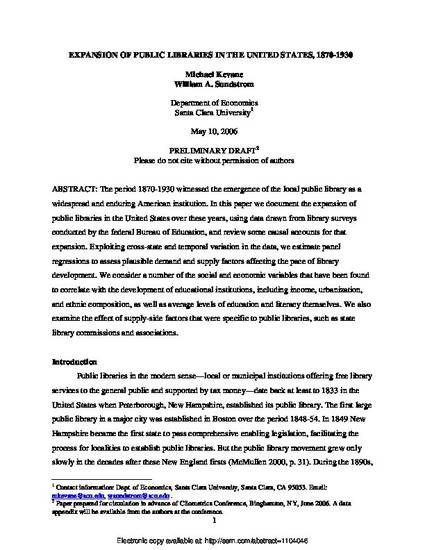
The period 1870–1930 witnessed the emergence of the local public library as a widespread and enduring American institution. We document the expansion of public libraries in the United States using data drawn from library surveys conducted by the federal Bureau of Education. We then review causal accounts for that expansion. Exploiting cross-state and temporal variation in the data, we use statistical techniques to assess a number of plausible demand-and-supply factors affecting the pace of library development. Social and economic variables in the analysis include state income or wealth, urbanization, ethnic composition, and gender ratios. We also examine the effect of institutional innovations, such as state library commissions and library associations, that likely affected the establishment of public libraries. We confirm that library expansion was robustly related to urbanization and greater ethnic (immigrant) diversity and to institutional innovations and that it was greatly delayed in southern states.

This is a pre-copyedited version of an article accepted for publication in Information & Culture: A Journal of History following peer review. The definitive publisher-authenticated version is available through the University of Texas Press.
https://doi.org/10.1353/lac.2014.0009